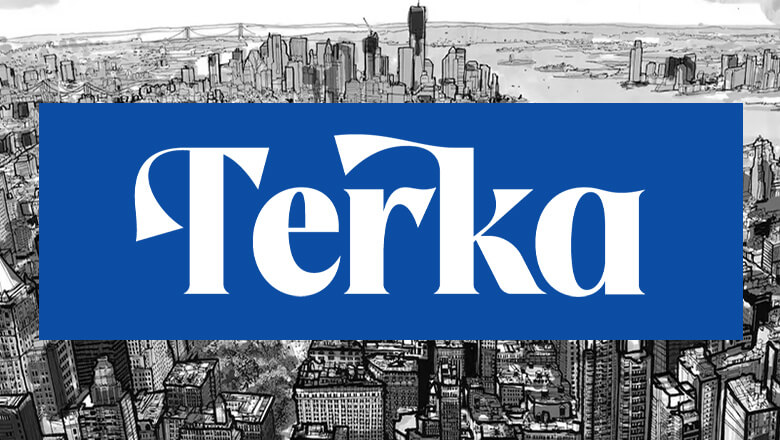
views
Historians are sheepishly admitting that a film has done more to popularise the teachings of Gandhi than they have been able to do. Munnabhai, that gangster with the golden heart is the alter ego of a new Mahatma.
But who is the Gandhi that the nation has collectively re-discovered? Have we re-discovered the political philosophy of satyagraha, the virtues of vegetarianism, of sexual self-restraint, nature therapy and cleaning lavatories which were in fact the keystones of the Gandhian vision? Or have we in fact simply re-cast Gandhi as a Sri Sri Ravi Shankar from the freedom era, a feel good, smiling, happiness-providing popular guru, who brings the temperature down during road rage disputes and calms the raging ego of the market economy?
Lage Raho Munnabhai has provided us with a Gandhi as comforter, Gandhi as a new age radio-and-TV 5-second messiah, a massage parlour saviour whose heartwarming formulations on how to deal with bad neighbours and corrupt officials is undoubtedly captivating, clever, cool and refreshing.
But the Gandhi in Munnabhai, and the Gandhi for whom the hurried middle class seems to collectively thirst, is a romanticized simple figure who embodies everything that is the polar opposite of the consumer society.
Even as salaries rise, and the number of cars on the road increase, we hanker for the simple man in the loincloth who traveled by third class compartment, just like the industrial revolution also created a yearning for the simple rural life, the beautiful idyllic village romanticised as the opposite number of the normless competitiveness of city life.
We have not re-discovered Gandhi in his all his complexity and dilemmas, we have simply re-discovered Gandhi as a Archie's card conscience keeper, a cartoon saint whose sayings are pasted on the bumper stickers of the latest Mercedes car.
Yet even in his time, Gandhian social ideals were accepted only by a relatively small group of disciples. As historian Sumit Sarkar writes, Gandhis real enemy was not just British political dominance, but all of modern industrial civilisation.
As Gandhi wrote in Hind Swaraj in 1909, railways have spread plague and produced famines, lawyers have stimulated disputes in their greed for briefs and western medicines are destroying nature: so "the railways, telegraphs, hospitals, lawyers, doctors and such like all have to go and the so-called upper class have to live consciously the simple life of a peasant."
If Gandhi had his way, there would perhaps be no multiplexes where we are at the moment enjoying the film Lage Raho. Every RJ and VJ now swinging to Gandhi rap should take the trouble to realize that the Gandhian social utopia might be rather distant from surround sound, dolby digital and broadband. We venerate Gandhi today as a patron saint of drop-outs. How many of us will bother to visit Sabarmati ashram or get to know his thoughts better? As RJ Ulta Pulta Nitin said recently, "Frankly, we don't want to know more about Gandhi. All we know is that if you're stuck in a traffic jam and another car is making you mad, it helps to think of Gandhigiri."
The dalit critique of Gandhi is another point to ponder in these days of Gandhi euphoria. "Examine, the Gandhian attitude to strikes," wrote BR Ambedkar, draftsman of our Constitution, "the Gandhian reverence for caste and the Gandhian doctrine of trusteeship of the rich..Gandhism is the philosophy of the well to do and leisured class." Ambedkar also wrote that Mahatmas have come and mahatmas have gone, but Untouchables have remained Untouchables.
Ambedkar argued that Gandhi drew a false gauze of unity over India's warring social landscape, that Gandhi, remained all his life an upper caste Hindu, using the imagery of Tulsidas' Ramayan, someone who was conservative and middle class and resisted the full scale transformation of Indian society by refusing to attack the caste system. For many modern dalits, even the word Harijan is a patriachal and condescending word, used by Gandhi to as much emphasise as well as uplift the inferior identity of scheduled caste communities. For Ambedkar, Gandhi was one of those "enlightened high caste social reformers who did not have the courage to agitate against caste."
The Congress party claims to venerate Gandhi. Yet the places where Gandhi worked and stayed such as Harijan Basti and Kingway camp in Delhi have fallen to neglect. Only Birla House is maintained in pristine splendour. Perhaps the reason why the Congress has been unable to practise gandhian methods of politics is precisely because saintliness simply cannot work in modern politics and Gandhian politics have failed in independent India. Sad, but true.
Also, can the gandhian form of protest, satyagraha actually work in the age of machine-made violence, as the 21st century appears to be. Can ahimsa or satyagraha triumph over modern terrorism? Here's a small example of the failings of satyagraha in our times. A group of protestors wearing Gandhi topis and carrying roses carried out a "satyagraha" against a liquor shop in Lucknow. It turned out later that the entire "designer satyagraha" was organized by a local politician who wanted to clear the area to stage a Ramlila. There was no support for the Lucknow satyagraha among the people, and for their pains the costumed satyagarhis, were taken to jail, detained for two hours, given a warning and let off. Confronted with the Pakistani incursion into Kargil, would it have suited India's interests to simply turn the other cheek and send the Pakistanis a reminder of ahimsa? Non-violent protest is certainly an ideal. Peace is certainly an ideal. but the white dove pinned up on our bedroom wall may bring a sentimental tear to the eye but may be an unrealistic option for those staring at the muzzle of a smoking gun.
Even less known is perhaps Gandhi as the failed father. The alcoholic suffering Harilal, Gandhi's eldest son, who converted to Islam to protest against his father's treatment of his family is testament to perhaps the high toll Gandhi's personal philosophy took on his family. In his biography of Kasturba, Arun Gandhi writes that the "long smouldering conflict" between Mohandas and Harilal arose because Gandhi refused to let Harilal gain any kind of professional success that was linked to his own stature. Additionally, Gandhi refused to allow his sick son, Manilal, to be treated with modern medicines, announced to his young wife without her consent, that he taken the vow of celibacy and forced her to clean toilets also against her wishes. "Say kasturba ki jai," Harilal once screamed at a crowd that was shouting in praise of his father, a father whom he despised. "He just does not care for us, any of us," Harilal once told Kasturba.
Lage Raho Munnabhai is a delightful film and justly introduces Gandhi to Gennext which is seeking a smiley face to make it through the day's work.
There are also many many committed Gandhians today who are quietly implementing Gandhian values in many parts of India. But the momentary mass hysteria over Gandhi may have more to do with the search for a romantic technological saint of the shopping mall, rather than a realistic appreciation of what the complex Gandhian persona actually implied.
(The writer is senior editor CNN-IBN.)
About the AuthorSagarika Ghose Sagarika Ghose has been a journalist for 20 years, starting her career with The Times of India, then moving to become part of the start-up team...Read Morefirst published:September 29, 2006, 10:27 ISTlast updated:September 29, 2006, 10:27 IST
window._taboola = window._taboola || [];_taboola.push({mode: 'thumbnails-mid-article',container: 'taboola-mid-article-thumbnails',placement: 'Mid Article Thumbnails',target_type: 'mix'});
let eventFire = false;
window.addEventListener('scroll', () => {
if (window.taboolaInt && !eventFire) {
setTimeout(() => {
ga('send', 'event', 'Mid Article Thumbnails', 'PV');
ga('set', 'dimension22', "Taboola Yes");
}, 4000);
eventFire = true;
}
});
window._taboola = window._taboola || [];_taboola.push({mode: 'thumbnails-a', container: 'taboola-below-article-thumbnails', placement: 'Below Article Thumbnails', target_type: 'mix' });Latest News
A wonderful new film has given us a new word. "Gandhigiri" has entered the popular lexicon. Mohandas Karamchand Gandhi was never more trendy. The young are buying books on him. Gandhi T-shirts and Gandhi mugs are now widely available.Members of the Congress party attended a screening of Munnabhai to remind itself of the values it claims to stand for.
Historians are sheepishly admitting that a film has done more to popularise the teachings of Gandhi than they have been able to do. Munnabhai, that gangster with the golden heart is the alter ego of a new Mahatma.
But who is the Gandhi that the nation has collectively re-discovered? Have we re-discovered the political philosophy of satyagraha, the virtues of vegetarianism, of sexual self-restraint, nature therapy and cleaning lavatories which were in fact the keystones of the Gandhian vision? Or have we in fact simply re-cast Gandhi as a Sri Sri Ravi Shankar from the freedom era, a feel good, smiling, happiness-providing popular guru, who brings the temperature down during road rage disputes and calms the raging ego of the market economy?
Lage Raho Munnabhai has provided us with a Gandhi as comforter, Gandhi as a new age radio-and-TV 5-second messiah, a massage parlour saviour whose heartwarming formulations on how to deal with bad neighbours and corrupt officials is undoubtedly captivating, clever, cool and refreshing.
But the Gandhi in Munnabhai, and the Gandhi for whom the hurried middle class seems to collectively thirst, is a romanticized simple figure who embodies everything that is the polar opposite of the consumer society.
Even as salaries rise, and the number of cars on the road increase, we hanker for the simple man in the loincloth who traveled by third class compartment, just like the industrial revolution also created a yearning for the simple rural life, the beautiful idyllic village romanticised as the opposite number of the normless competitiveness of city life.
We have not re-discovered Gandhi in his all his complexity and dilemmas, we have simply re-discovered Gandhi as a Archie's card conscience keeper, a cartoon saint whose sayings are pasted on the bumper stickers of the latest Mercedes car.
Yet even in his time, Gandhian social ideals were accepted only by a relatively small group of disciples. As historian Sumit Sarkar writes, Gandhis real enemy was not just British political dominance, but all of modern industrial civilisation.
As Gandhi wrote in Hind Swaraj in 1909, railways have spread plague and produced famines, lawyers have stimulated disputes in their greed for briefs and western medicines are destroying nature: so "the railways, telegraphs, hospitals, lawyers, doctors and such like all have to go and the so-called upper class have to live consciously the simple life of a peasant."
If Gandhi had his way, there would perhaps be no multiplexes where we are at the moment enjoying the film Lage Raho. Every RJ and VJ now swinging to Gandhi rap should take the trouble to realize that the Gandhian social utopia might be rather distant from surround sound, dolby digital and broadband. We venerate Gandhi today as a patron saint of drop-outs. How many of us will bother to visit Sabarmati ashram or get to know his thoughts better? As RJ Ulta Pulta Nitin said recently, "Frankly, we don't want to know more about Gandhi. All we know is that if you're stuck in a traffic jam and another car is making you mad, it helps to think of Gandhigiri."
The dalit critique of Gandhi is another point to ponder in these days of Gandhi euphoria. "Examine, the Gandhian attitude to strikes," wrote BR Ambedkar, draftsman of our Constitution, "the Gandhian reverence for caste and the Gandhian doctrine of trusteeship of the rich..Gandhism is the philosophy of the well to do and leisured class." Ambedkar also wrote that Mahatmas have come and mahatmas have gone, but Untouchables have remained Untouchables.
Ambedkar argued that Gandhi drew a false gauze of unity over India's warring social landscape, that Gandhi, remained all his life an upper caste Hindu, using the imagery of Tulsidas' Ramayan, someone who was conservative and middle class and resisted the full scale transformation of Indian society by refusing to attack the caste system. For many modern dalits, even the word Harijan is a patriachal and condescending word, used by Gandhi to as much emphasise as well as uplift the inferior identity of scheduled caste communities. For Ambedkar, Gandhi was one of those "enlightened high caste social reformers who did not have the courage to agitate against caste."
The Congress party claims to venerate Gandhi. Yet the places where Gandhi worked and stayed such as Harijan Basti and Kingway camp in Delhi have fallen to neglect. Only Birla House is maintained in pristine splendour. Perhaps the reason why the Congress has been unable to practise gandhian methods of politics is precisely because saintliness simply cannot work in modern politics and Gandhian politics have failed in independent India. Sad, but true.
Also, can the gandhian form of protest, satyagraha actually work in the age of machine-made violence, as the 21st century appears to be. Can ahimsa or satyagraha triumph over modern terrorism? Here's a small example of the failings of satyagraha in our times. A group of protestors wearing Gandhi topis and carrying roses carried out a "satyagraha" against a liquor shop in Lucknow. It turned out later that the entire "designer satyagraha" was organized by a local politician who wanted to clear the area to stage a Ramlila. There was no support for the Lucknow satyagraha among the people, and for their pains the costumed satyagarhis, were taken to jail, detained for two hours, given a warning and let off. Confronted with the Pakistani incursion into Kargil, would it have suited India's interests to simply turn the other cheek and send the Pakistanis a reminder of ahimsa? Non-violent protest is certainly an ideal. Peace is certainly an ideal. but the white dove pinned up on our bedroom wall may bring a sentimental tear to the eye but may be an unrealistic option for those staring at the muzzle of a smoking gun.
Even less known is perhaps Gandhi as the failed father. The alcoholic suffering Harilal, Gandhi's eldest son, who converted to Islam to protest against his father's treatment of his family is testament to perhaps the high toll Gandhi's personal philosophy took on his family. In his biography of Kasturba, Arun Gandhi writes that the "long smouldering conflict" between Mohandas and Harilal arose because Gandhi refused to let Harilal gain any kind of professional success that was linked to his own stature. Additionally, Gandhi refused to allow his sick son, Manilal, to be treated with modern medicines, announced to his young wife without her consent, that he taken the vow of celibacy and forced her to clean toilets also against her wishes. "Say kasturba ki jai," Harilal once screamed at a crowd that was shouting in praise of his father, a father whom he despised. "He just does not care for us, any of us," Harilal once told Kasturba.
Lage Raho Munnabhai is a delightful film and justly introduces Gandhi to Gennext which is seeking a smiley face to make it through the day's work.
There are also many many committed Gandhians today who are quietly implementing Gandhian values in many parts of India. But the momentary mass hysteria over Gandhi may have more to do with the search for a romantic technological saint of the shopping mall, rather than a realistic appreciation of what the complex Gandhian persona actually implied.
(The writer is senior editor CNN-IBN.)















Comments
0 comment